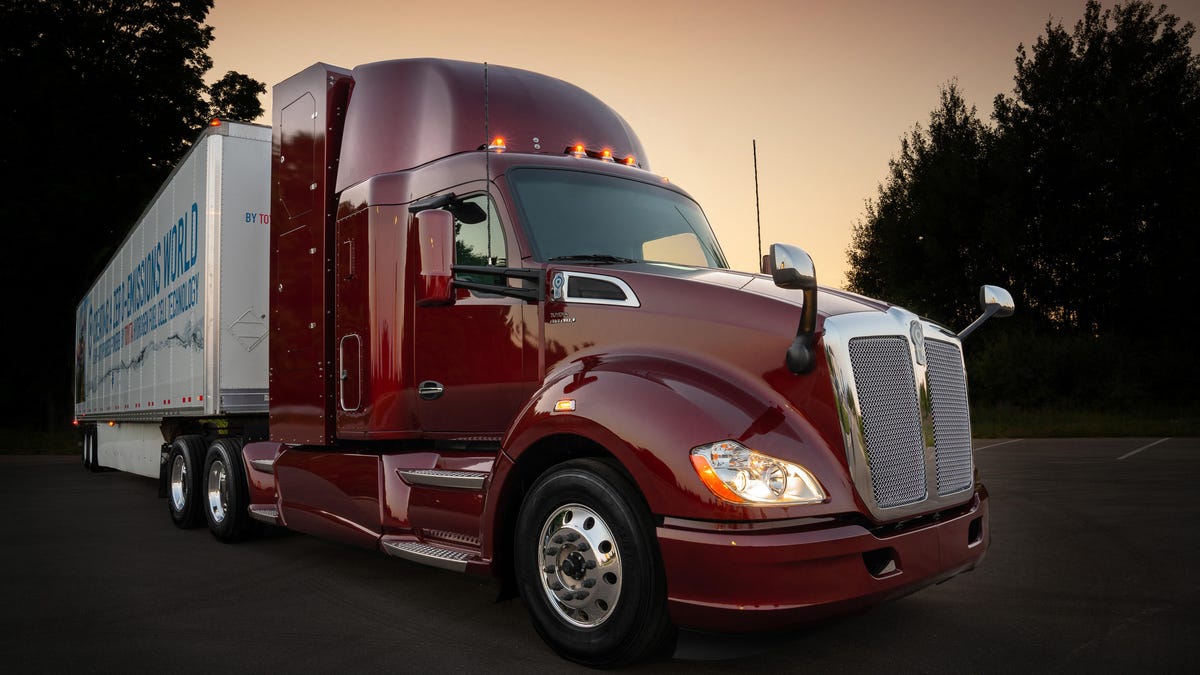Toyota unveils Project Portal 2.0 hydrogen fuel-cell semi truck
And now you can sleep in it!
Toyota's efforts in developing hydrogen fuel-cell powertrains aren't limited to passenger cars -- it's also working to make semis a bit greener.
Toyota has unveiled the second iteration of its Project Portal hydrogen fuel-cell electric semi truck. The first version, which started testing last April, was created as a skunkworks project and made it from concept to production in just about a year, with Toyota's engineers working out of a garage in Michigan.
Project Portal gets its power from a pair of hydrogen fuel-cell stacks borrowed from the Mirai sedan. Combined with a 12-kWh battery, the truck put out an impressive 670-plus horsepower and 1,325 pound-feet of torque. Its total combined weight rating is a hefty 80,000 pounds. The first version's range was about 200 miles, but this second version pushes that range north of 300 miles. The new Project Portal also packs a sleeper cab and a revised powertrain that boosts cab space without requiring a longer wheelbase.
Project Portal 2.0 will begin its drayage work this fall. The pioneering variant has already clocked more than 10,000 miles as it transported goods over short distances in and around the Ports of Long Beach and Los Angeles. As with every other hydrogen fuel-cell vehicle, the only emissions byproduct is pure potable water, although I don't blame you if you're not comfortable enough to pour a glass and take a sip of tailpipe juice.
Toyota was wise to focus on improving drayage. As the automaker notes, more than 43,000 diesel trucks work at ports across the US, with the Ports of Long Beach and Los Angeles comprising more than one-third of that total. Replacing these polluting diesels with cleaner hydrogen-based power could go a long way in reducing local particulate emissions. Toyota hopes that its efforts can contribute to a complete elimination of carbon-dioxide emissions at its Port of Long Beach facility by 2050.


